Jim Schatz once said, “Training is paramount to effectiveness. But advanced hardware enables advanced training and employment.”
Two eyes. That’s all I can remember seeing, and I can still see it clearly. They were behind a gas mask that looked menacingly down the hallway towards me- short-barreled AR-15 at the ready. The armor-clad figure turned his head, and that was my cue to draw my own firearm. It was almost fully presented by the time he looked back at me… and it was game on. "Wait, WHAT?!" you might ask. Let me explain.
A few weeks earlier, I had been selected to play the bad guy in my local SWAT team’s full-team workup. Something about me taking "hostages" and then ambushing responding cops, ultimately ending with me being shot down in a blaze of glory via Simunition rounds. But in the moment when shots began flying, I remember seeing eyes. Focused, wide, and white eyes.
That experience, along with the words of wisdom spoken to me by individuals far wiser than I in the ways of the boomstick, began to change the way I thought about using my handgun.
When I wrote about the Daily Arsenal of the Armed Citizen last year, I was carrying a Glock 17, rocking my Trijicon HD sights, and thought it was entirely adequate. And while it very well may be adequate for most, I want to be able to protect those I love and care for against any threat they may face. And in our turning, burning, and rapidly-changing world, the threat we face is evolving. The lone mugger in the alley with a knife is being replaced by aggressive gang violence, home invasions with multiple assailants, and perhaps most horrifically, the "active killer" scenario that seems to be all-too-common.
Enter the red dot sight (RDS) upgrade to our conceal-carry handguns.
I’ll be honest. I don’t like change. If something works, and works well, why change it? So, the first time I tried shooting a friend’s RDS-equipped pistol (I think it was an FN FNX-45 Tactical), I had the same complaints everyone else seems to have: "It’s slower up close, and it’s hard to find the dot." "Yeah, it might be good for target shooting, but it might not work for heavy-duty use." "It’s weird!" and so on. But sometimes, the overwhelming tidal wave of science and real-world study or experience hits you in the face, and demands you look to the future. So with an open mind, I began to slowly change the gun I carried on a daily basis.
THE BEGINNING- QUESTIONS ASKED, LESSONS LEARNED
Why a red dot sight? This question has been asked thousands of times, and many answers can be found on the interwebz. I think it can best be boiled down to the following few points:
This one is simple biology. With an iron-sighted pistol, your eyes have to focus on three things for accurate shooting: the rear sight, the front sight, and the target. It’s easier to look at one thing than three. With a red dot sight, all you have to look at is the target, and the dot will superimpose itself over your target. This is, of course, exactly why red dots are the standard optic for carbine rifles. One focal plane is easier than three. During the heightened stress response I experienced with the SWAT team’s training scenario, all I could see were the eyes of my opponent. I never once saw my sights, and all I remember was the whites of his eyes peering at me intensely from behind the gas mask. A few more simunition sessions later, I began to realize it was much easier to focus on the target than it was to focus on my sights. If I can keep my eyes on the target, and shoot quickly and accurately, that is a huge advantage over having to shift visual focus back and forth.
Since our eyes only have to focus on one visual plane instead of three, an RDS can let us take precise shots much easier than iron sights. And although some dots are smaller and some are larger, in general, a dot provides a much more elegant solution for precise shooting. A free-floating dot allows shooters to see UNDER their point of aim, giving yet another reference point that they can use to build their sight picture. I’m currently using a 3 MOA dot, and it’s a much smaller aiming point than any iron sights I’ve ever used. That takes "T-zone" shots at speed to "inside tear duct of the left eye" shots at the same speed and cadence. Precise shots with an RDS become so much easier, it feels like cheating sometimes. In fact, that is exactly what my dad said the first time he shot my RDS-equipped pistol.
An RDS, giving us a much more precise shooting platform, and a much easier time focusing on a target with our eyes, opens up a new level of long-distance shooting with a pistol. Precise long-distance shots with a pistol, even at speed, aren’t unheard of. And with good training and a little bit of luck, they can be repeated, and repeated quickly. But a red dot just makes it way, way easier. And fast, precise shots at a distance just might be a game-changer in an active killer situation. As body armor and rifles become standard on ISIS-type terrorists, head shots at distance become a necessity. A red dot just makes it that much easier.
Experts and your friendly neighborhood Guns&Tactics writer, agree. Red dots truly shine when shooting on the move, engaging multiple targets, and dealing with moving targets. Competition shooters have been using red dots for quite a few years, and show just what a level of competence can be attained with an RDS. For all of human history, combat engagements were focused on one’s opponent. That changed when the invention of the gun demanded that humans take their eyes off their enemy and put them on some metal sights. Red dots allow us to focus on the target rather than the weapon, bringing our fight-senses back to their original state. On a less-anthropological scale, I know I can shoot significantly better on the move when I can look at my targets instead of my sights.
I’m not the best shooter in the world, but I don’t necessarily consider myself a slouch when it comes to poking holes in paper and making steel sing. All that being said, a year ago, I don’t think I would have fully adopted a red dot sight. A year ago, when I presented a handgun, there was some wobble and I searched for my sights for a split-second before acquiring a proper sight picture and firing. A red dot is less forgiving- in order to get the most out of your RDS, presentation must be good enough to immediately get a sight picture. Red dots forced me back to some of the fundamentals of shooting, but the results were astounding. Not only was my accuracy better, but the refined presentation let me make solid hits on target faster than the wobbly-search-for-sights-before-trigger-press I was dealing with prior to adopting the RDS.

I still own several pistols with traditional iron sights. I was worried I would get so used to the Venom’s glowing red orb of precision I would lose the ability to shoot quickly and accurately with my iron sights. Interestingly enough, I actually became faster using my iron sights after spending some time on a red dot. The RDS forced my presentation to be more precise, and the benefit paid off when my sight picture with iron sights stopped wobbling, but instead was a clean and consistent presentation. The transition from irons to RDS took some work- going from RDS to irons did not.
Ok, so red dots are an advantage over iron sights, and are worthy of consideration by the intelligent armed citizen. This much is settled. But questions remain: How do you mount one? Which one should you get? Won’t the battery fail? What if it does? These were all questions that haunted me when I started down the rabbit hole of getting an RDS.
Numerous discussions on the Primary and Secondary forums have covered these issues extensively.
The simple answers are as follows:
Currently, three options are viable. First, you can buy a gun pre-machined to take an RDS, such as the Glock MOS or M&P C.O.R.E. line. These use a series of plates to attach different kinds of optics to the pistol’s slide. Secondly, you can buy adapter mounts (such as the Balor mount from Raven Concealment) or even entire slides (the Unity Tactical Atom slide is an example). The Balor mount is a neat solution- it attaches to the dovetail of the rear sight and to the backplate of your Glock. The downside to this solution is that the RDS is mounted higher up, resulting in a higher height-over-bore offset. Finally, you could just make the leap and machine your slide directly for the RDS of your choice. This is the ideal mounting solution, as the optic sits the lowest, and will have the most secure fit of the three mounting options. Some shops even customize the cut to YOUR optic. Nifty!
This is a question you’ll have to decide for yourself. The Trijicon RMR has distinguished itself as the heaviest-duty pistol RDS currently available, and is the standard. The Leupold Deltapoint Pro is another excellent choice. I talked to my good friend Bryan Welch over at We Plead the 2nd, and took his suggestion to run a Vortex Venom on my Glock 19. So far, it has been absolutely excellent, and would suggest it as a budget solution for those dipping their proverbial toe into the waters of red dot pistols. The next RDS pistol I build will have a Trijicon RMR06 on it, and will likely be along the same lines as the famous "Roland Special" pistol design.
Short answer, yes. Batteries all run out of energy eventually, but with new RDS sights measuring battery life in years rather than weeks, a little bit of maintenance goes a long way. This is one area where the Vortex Venom didn’t match up to, say, the RMR. Running the Venom on auto-brightness, the battery lasted 4 months of continuous use. The Venom has a top-load battery compartment, so changing it was a breeze. My buddy with a Trijicon RMR just replaces the battery on his RDS every year on his birthday. The old saying, "Those who fail to prepare, prepare to fail."
On rifles, we often run back up iron sights (BUIS) in the event the red dot fails. Pistols are no different. In order to effectively co-witness (either a true co-witness or lower 1/3rd) your BUIS with your red dot, you will need to get suppressor-height sights. Learn from my mistakes and just get flat black sights. I ponied up for some tritium night sights, and now the green orbs are a bit distracting during low-light shooting. In an age where we should all be using flashlights- either handheld or weapon-mounted- the flat black sights are far superior. But still, everything mechanical will fail. My Vortex Venom has gone through just over 3600 rounds at the time of this writing, held zero, and has experienced no failures.
This is one of the few issues with red dots that may have some merit, but is not without proper workarounds. A few of my good friends and I get together once or twice a month and do a conditioning workout, interposed with shooting drills. On one occasion, I was doing burpees in the snow (don’t ask), and the snow filled up the window of my RDS. Needless to say, I couldn’t see the dot- icy snow and slush had not only filled the window, but obstructed my entire plane of view; even my iron sights were useless. One workaround for this issue is to learn to index the bezel/housing of your RDS on a human silhouette target in such a way as to put rounds center-mass. A flashlight with a good hotspot will get you another reference point. Another workaround would be to, you know, not do burpees in the snow, but that’s a topic for another day. I have yet to find rain to be an issue, and I live in Washington State. A conceal-carried handgun won’t be exposed to the elements until you clear your garment and draw your firearm. Cat Crap is a product that makes glass essentially fog-proof. I coated my RDS with Cat Crap, and it has not fogged up, despite shooting in cold, warm, hot, and changing environments. Snow, rain, fog, and other elements have yet to slow my RDS down in any meaningful way.
Now, a quick search on the internet will reveal a few "experts" completely dissing on red dots, because they are supposedly slower at close ranges than iron sights. Truthfully, that is a matter of training. Because of the precision afforded by red dots, many shooters become perfectionists, waiting for the perfect sight picture before firing- something they don’t do when shooting up close with iron sights. Get a "good enough" sight picture and cleanly press the trigger. When I first got my red dot, this idea bothered me- statistically, most gun fights happen at very close ranges. So, I went out to the range, set up a paper target, grabbed my trusty shot timer, and began to run some conceal-carry drills. I can routinely shoot two rounds in under a second from concealment, and that day was no different. But the first thing I noticed when I shot at speed was that, unlike iron sights, I was seeing my red dot. It was only for a split second, but I could see roughly where the rounds were aimed, whereas that had not been the case when running purely iron sights. With irons it was about good presentation and natural point of aim, but with the RDS, I could see the dot as I fired. Advantage RDS.

Holster selection turned out to be tricky, but my go-to holster manufacturer, Werkz Ltd., whipped out a beautiful Bisect V2 appendix IWB holster/mag carrier combo. I suppose most existing holsters could be cut to fit a red dot, but the Bisect V2 is not only one of the fastest holsters I’ve used, but also is comfortable and functional. For a holster to work with a red dot, there simply has to be a cutout along the top of the slide, allowing the RDS to drop lower into the holster than your iron sights. I just recently acquired a CNC Holsters Keroman V2, and it is another excellent choice for carrying concealed. Many manufacturers have an option for RDS sight cuts.
Concealing a red dot proved to be a non-issue. Most concealment/printing issues revolve around the grip of a firearm. An RDS sits on the top of a firearm. The Venom is a tad bit wider than the slide on my Glock 19, but is not wider than the grip, and my fat roll isn’t affected at all by the dot. Seriously, it’s a non-issue. I’m currently carrying my G19 with a Surefire X300U-B, appendix, and with a good holster, it conceals well while still being comfortable.
I wrote this article to help people starting down the path of mounting an RDS onto their pistol. I scoured the internet in search of articles and videos that would help me decide if a red dot was right for me, and eventually pieced it together. Hopefully this article saved you some time. But my advice today, for anyone even considering a red dot, would come down to practice. Do you have time to focus on making yourself a more proficient shooter? If yes, then a red dot is for you. If you aren’t going to put the time in to become a better guardian to those you love, as a responsible armed citizen, a red dot will be nothing more than a novelty.
But for the armed citizen looking to upgrade, looking to take their skills and tools to the next level of proficiency, the pistol-mounted red dot is a true game changer. Ask a friend if you can shoot their RDS, and see how you like it. I firmly believe that the responsible armed citizen, who invests time, talent, and treasure into becoming a more dangerous individual in order to protect those who he or she cares for, should strongly consider upgrading their handgun, and bringing it into the future. Jim Schatz once said, "Training is paramount to effectiveness. But advanced hardware enables advanced training and employment." And anyone looking at a target with a dot imposed over it can see that red dot sights on pistols are the future of handguns.
Oh, and 30 Simunition rounds later, I still have scars from the SWAT guy in the hallway. Good times.
* The views and opinions expressed on this web site are solely those of the original authors and contributors. These views and opinions do not necessarily represent those of Guns & Tactics Magazine,
the administrative staff, and/or any/all contributors to this site.



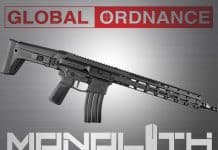
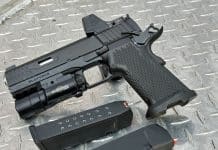
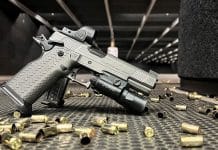


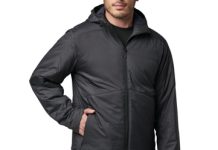
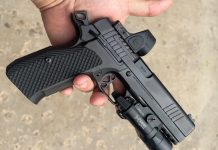
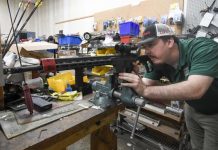

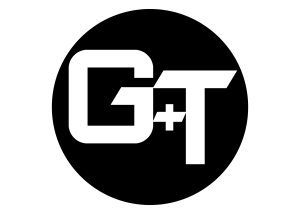
Thanks!